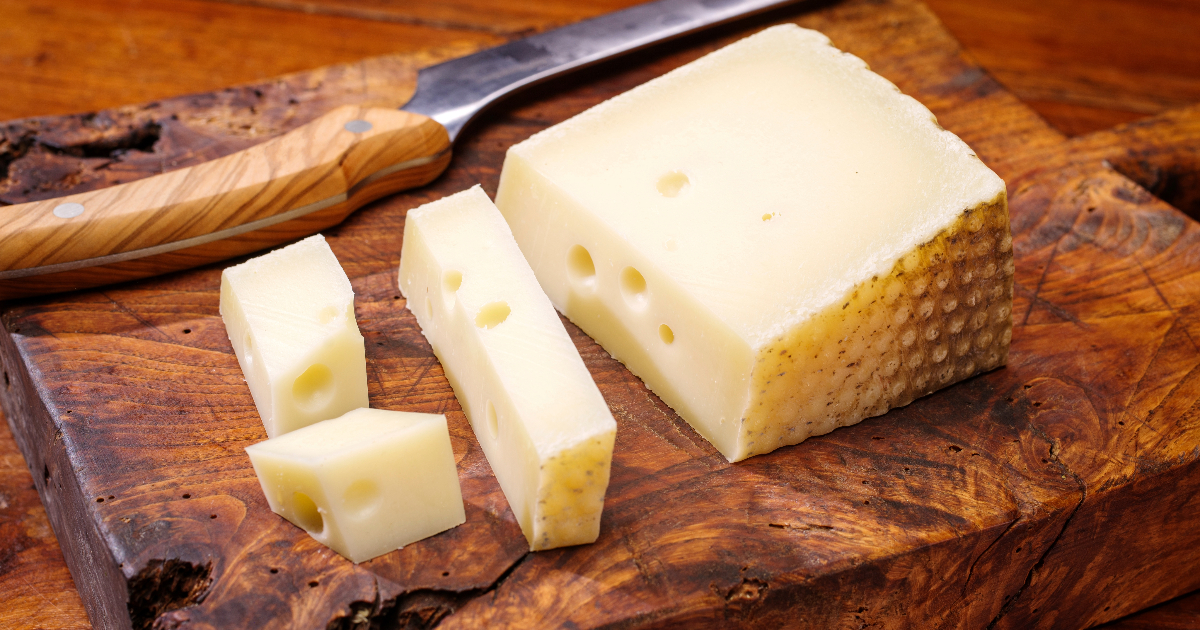Asiago and Parmesan are two of the most popular Italian cheeses.

They share some similarities, yet have distinct differences that impact their flavor, texture and best uses.
Overview
Asiago is a cow's milk cheese named after the Asiago Plateau region of Italy where it originated. It comes in a fresh soft form called Asiago Pressato and an aged hard form called Asiago d'Allevo.
Parmesan is the English name for Parmigiano-Reggiano, an aged hard cow's milk cheese from the Emilia-Romagna region of Italy.
While both are Italian cheeses, Asiago and Parmesan have unique production methods, flavors, textures and applications.
History and Origins
Asiago originated in the Veneto region as early as the 10th century. It was likely first made from sheep's milk, then transitioned to cow's milk around the 16th century.
The Consortium of Asiago Cheese formed in 1979 to monitor production and protect the name. Asiago achieved Protected Designation of Origin (PDO) status from the EU in 1996.
Parmigiano-Reggiano also has ancient roots, dating back to the 1200s around Parma. Strict production codes govern Parmigiano-Reggiano, which attained PDO status in 1955.
Key Difference: Asiago comes from the Veneto region while Parmesan hails from Emilia-Romagna. Both have PDO status ensuring traditional production methods.
Ingredients and Process
Asiago
- Asiago Pressato is made from whole cow's milk. It uses a small amount of rennet and cure for a short 20-40 day aging.
- Asiago d'Allevo combines whole and partially skimmed milk. It uses more rennet and has a minimum 60 day aging period, up to over 1 year for sharper flavors.
Parmesan
- Parmigiano-Reggiano uses raw, partially skimmed cow's milk, calf rennet and salt.
- It ages for over 12 months, with extra aging time yielding a sharper taste.
Key Difference: Asiago relies more on whole milk while Parmesan uses partially skimmed milk. Parmesan also has a longer required aging time.
Texture and Appearance
- Asiago Pressato has a smooth, semi-soft elastic texture with small eyes or holes. It's white in color.
- Aged Asiago is crumbly with a hard texture full of crystalline crunches. It ranges from light to dark yellow.
- Parmesan is grainy, brittle and crumbles easily. It's a pale yellow with white marbling.
Key Difference: Parmesan has a more pronounced granular, crumbly texture versus Asiago's smoothness when fresh and semi-hard nature when aged.
Flavor Profile
- Asiago Pressato is mild, delicate and slightly tangy, with a buttery sweetness.
- Aged Asiago becomes sharper and more pungent, taking on nutty and bitter notes.
- Parmesan has a rich umami flavor, fruity sweetness and savory sharpness with a lingering nutty taste.
Key Difference: Parmesan has a more complex, robust flavor compared to Asiago's milder milky tones. Aged Asiago gains sharpness but not to Parmesan's level.
Usages
- Asiago Pressato is excellent for sandwiches, omelets, pizzas and pastas where its melty texture shines.
- Aged Asiago grates well over pastas, salads, risottos and pizzas needing a sharp kick.
- Parmesan is the ideal finishing cheese to grate over pastas and risottos. Its flavor stands out when eaten in chunks or thinly sliced.
Key Difference: Parmesan is best showcased on its own while Asiago melts easily for cooking. Aged Asiago can substitute for Parmesan but offers less complexity.
Nutrition
- Asiago has around 100 calories, 8g fat, 8g protein and 0 carbs per ounce. It's high in calcium and vitamins A and B12.
- Parmesan contains about 120 calories, 9g fat, 10g protein and 1g carbs per ounce. It's also high in calcium and low in lactose.
Key Difference: Parmesan is slightly higher in protein, calcium and calories than Asiago in a typical serving. Overall, their nutrition profiles are comparable.
Pricing
Asiago ranges from $15-$20 per pound. Parmesan costs around $18-$25+ per pound due to its strictly regulated production.
Pairings
- Asiago Pressato pairs well with light whites, fruits, nuts, olives and charcuterie.
- Aged Asiago stands up to bolder reds, cured meats, mushrooms and robust olive oils.
- Parmesan complements medium reds, walnuts, figs, balsamic vinegar and Dry sparkling wines.
FAQs
Can you substitute Parmesan for Asiago?
Yes, aged Asiago can stand in for Parmesan in most recipes, especially when grated. Parmesan has a sharper, more complex taste, so the flavor won't be identical.
How do you use fresh Asiago cheese?
Fresh Asiago is great sliced in sandwiches, shredded over salads, melted onto pizzas or in omelets, baked into breads and incorporated into dips or sauces.
Does Parmesan or Asiago melt better?
Fresh Asiago melts very well when shredded due to its pliable texture. Aged Asiago and Parmesan soften but maintain their shapes when exposed to heat rather than getting gooey.
Can I freeze Asiago and Parmesan?
You can freeze both cheeses for 6-8 months. Grate or slice before freezing for easier use. Allow to thaw overnight in the fridge before using.
Which cheese is healthier, Asiago or Parmesan?
Both Asiago and Parmesan are relatively low in fat and carbs compared to other cheeses. Parmesan has slightly more protein and calcium. Overall their nutrition is comparable.
Conclusion
Although Asiago and Parmesan bear some similarities as Italian cheeses, their differences in flavor, texture, aging and best uses make each cheese shine in unique ways.
Parmesan offers an unmistakable hard, crumbly texture and rich umami taste that distinguishes it as a specialty cheese.
Asiago impresses with its adaptable smooth and melty quality when fresh and nutty, bold punch when aged.

